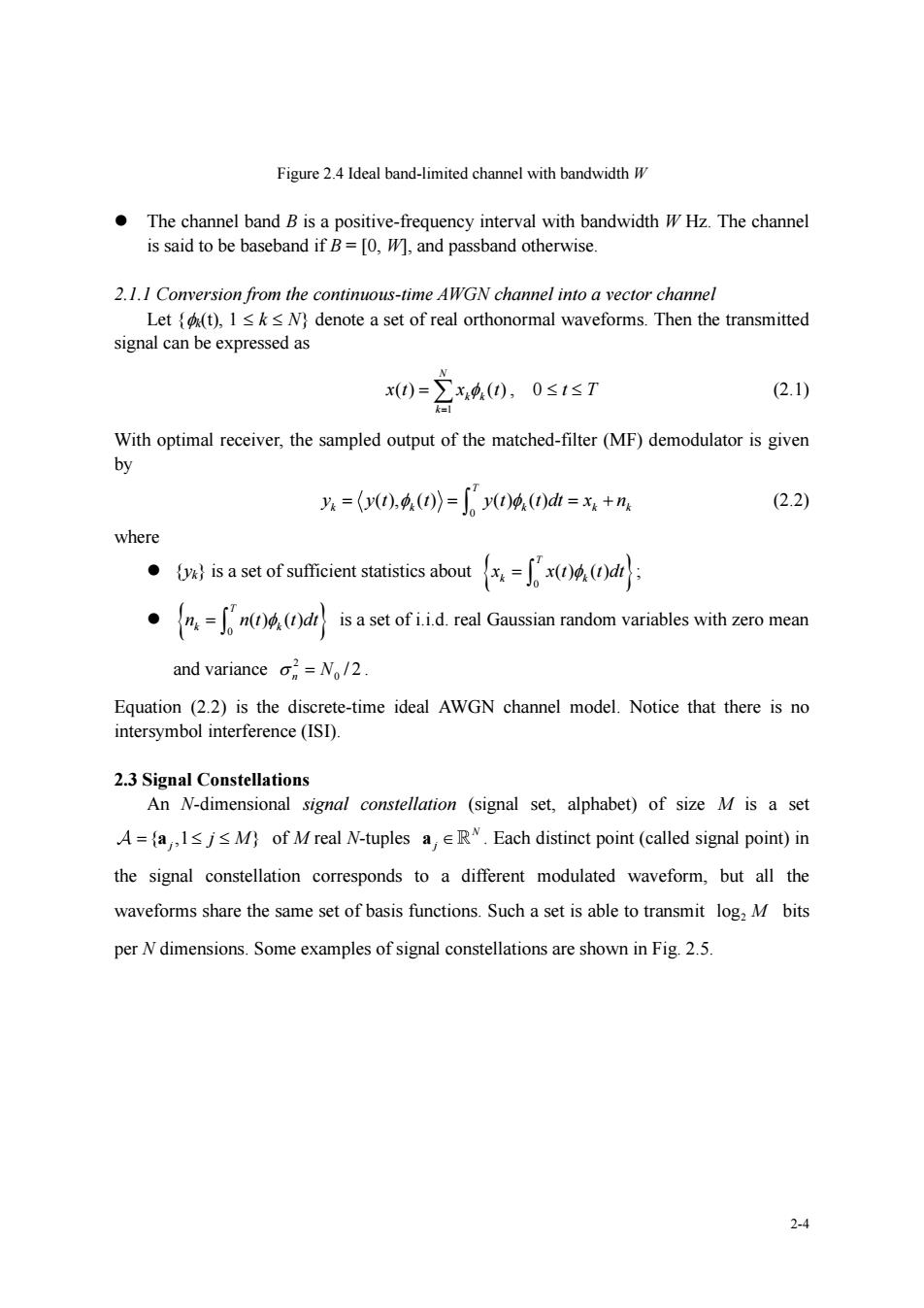正在加载图片...

Figure 2.4 Ideal band-limited channel with bandwidth The channel band B is a positive-frequency interval with bandwidth W Hz.The channel is said to be baseband if B=[0,]and passband otherwise. 2.1.1 Conversion from the continous-time AWGN channel into a vector channel Lett),1sksN)denote a set of real orthonormal waveforms.Then the transmitted signal can be expressed as x(0=∑x4,0,0≤1≤T (2.1) With optimal receiver,the sampled output of the matched-filter(MF)demodulator is given by =(0),40》=∫y)40)d=x+n (2.2) where yis a set of sufficient statistics about(d (dr is a set of idreal Gaussian random variables with zero mean and variance =No/2 Equation (2.2)is the discrete-time ideal AWGN channel model.Notice that there is no intersymbol interference(ISI). 2.3 Signal Constellations An N-dimensional signal constellation (signal set.alphabet)of size M is a set A=ajsM)of Mreal N-tuples aR.Each distinct point(called signal point)in the signal constellation corresponds to a different modulated waveform,but all the waveforms share the same set of basis functions.Such a set is able to transmit log,M bits per Ndimensions.Some examples of signal constellations are shown in Fig.2.5. 2-4 Figure 2.4 Ideal band-limited channel with bandwidth W ⚫ The channel band B is a positive-frequency interval with bandwidth W Hz. The channel is said to be baseband if B = [0, W], and passband otherwise. 2.1.1 Conversion from the continuous-time AWGN channel into a vector channel Let {k(t), 1 k N} denote a set of real orthonormal waveforms. Then the transmitted signal can be expressed as 1 ( ) ( ) N k k k x t x t = = , 0 t T (2.1) With optimal receiver, the sampled output of the matched-filter (MF) demodulator is given by 0 ( ), ( ) ( ) ( ) T k k k k k y y t t y t t dt x n = = = + (2.2) where ⚫ {yk} is a set of sufficient statistics about 0 ( ) ( ) T k k x x t t dt = ; ⚫ 0 ( ) ( ) T k k n n t t dt = is a set of i.i.d. real Gaussian random variables with zero mean and variance 2 0 /2 n = N . Equation (2.2) is the discrete-time ideal AWGN channel model. Notice that there is no intersymbol interference (ISI). 2.3 Signal Constellations An N-dimensional signal constellation (signal set, alphabet) of size M is a set { ,1 } j = a j M of M real N-tuples N a j . Each distinct point (called signal point) in the signal constellation corresponds to a different modulated waveform, but all the waveforms share the same set of basis functions. Such a set is able to transmit 2 log M bits per N dimensions. Some examples of signal constellations are shown in Fig. 2.5